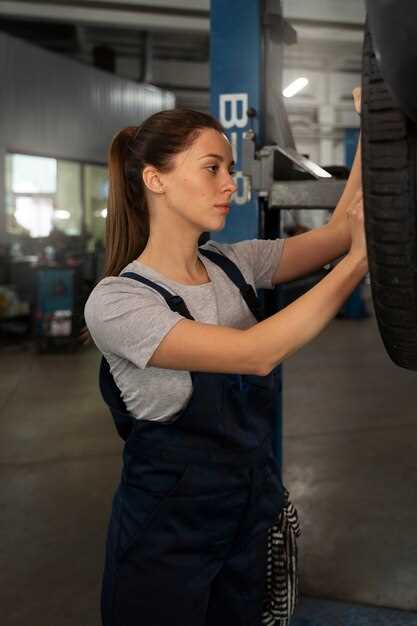How to inspect belts and hoses for wear

Regular inspection of belts and hoses is crucial for maintaining the performance and longevity of your vehicle. These components, although often overlooked, play a vital role in the smooth operation of your engine and other systems. Over time, wear and tear can lead to serious damage, potentially resulting in costly repairs or even breakdowns. Understanding how to identify signs of wear on belts and hoses can save you both time and money in the long run.
Belts, such as the serpentine and timing belts, are responsible for synchronizing the movement of various engine components. Any visible cracks, fraying, or glazing on the surface of a belt may indicate impending failure. Similarly, hoses must be checked for leaks, bulges, or hardening, which can compromise their integrity and lead to inefficient coolant flow or loss of pressure. By regularly examining these critical parts, you can prevent unexpected damage and ensure that your vehicle operates at its best.
In this guide, we will delve into the essential steps for inspecting belts and hoses, highlighting the key indicators of wear that every vehicle owner should be aware of. By arming yourself with this knowledge, you can take proactive measures to address any issues before they escalate, ensuring the reliability and safety of your vehicle.
How to Perform a Thorough Belt Inspection for Signs of Wear
Inspecting belts for wear is crucial for maintaining the performance of your vehicle. Start by visually examining the entire length of the belt for any signs of damage, such as cracks, frays, or missing chunks. These visual indicators can suggest that the belt is reaching the end of its lifespan.
Next, check the tension of the belt. A belt that is too loose may slip, while a belt that is too tight can cause undue stress on pulleys and bearings. Use your fingers to press down on the belt; if it feels overly flexible or moves excessively, it may need adjustment or replacement.
Pay attention to any abnormal noises during this inspection. Squealing or chirping sounds while the engine is running can indicate a problem with the belt’s alignment or tension. Also, check for any discoloration, which can be a sign of overheating and further damage to the belt.
If possible, rotate the belt to visually inspect all surfaces. Look for uneven wear patterns, which could indicate alignment issues or faulty components. Additionally, inspect the belt’s side walls for signs of glazing or shine, as this can suggest that the belt is slipping and should be replaced.
Finally, consult your vehicle’s owner manual for specific recommendations regarding belt inspection intervals. Regular checks can help prevent unexpected breakdowns and ensure optimal vehicle performance.
Identifying Common Types of Hose Damage and Their Implications

Hoses are vital components that assist in the operation of various systems in vehicles and machinery. Identifying damage to hoses early can prevent significant issues, including system failures. Here are some common types of hose damage and their implications.
Cracking and Fractures: One of the most prevalent forms of damage, cracking often occurs due to age, heat, or exposure to harsh chemicals. Cracked hoses can lead to leaks, causing a drop in pressure and potential failure in systems that rely on fluid transfer. This type of damage often indicates that the hose material has deteriorated and may need replacing to avoid catastrophic leaks.
Bulging: A bulging hose typically indicates an internal blockage or pressure build-up. This type of damage can compromise the integrity of the hose, leading to ruptures if not addressed promptly. It’s essential to inspect the system connected to a bulging hose to identify and rectify the underlying issue, as failure to do so may result in extensive system damage.
Wear and Abrasion: Hoses can suffer from external wear due to friction against other components or exposure to rough surfaces. This type of damage can result in thin spots, which are prone to leak or burst under pressure. Regular inspections should include a check for signs of friction and wear to ensure the longevity of the hose and the components it interacts with.
Leaks: Visible leaks are an obvious sign of hose damage. These can occur at connection points, or throughout the hose material itself. Depending on the fluid being transmitted, leaks can lead to contamination of the system, reduced efficiency, and can pose safety hazards. Identifying the source of leaks and replacing the affected hoses is critical to maintaining system integrity.
Discoloration or Hardening: A change in color or texture, such as hardening or becoming brittle, often indicates that the hose has been exposed to extreme temperatures or harmful chemicals. This type of damage affects flexibility and could eventually lead to cracking or complete failure. Regular monitoring of hose appearance can help in early detection of potential issues.
In conclusion, recognizing these common types of hose damage is crucial for maintaining the efficiency and safety of any vehicle or machinery. Regular inspections and timely replacements of damaged hoses can prevent further complications, ensuring that all systems function smoothly.
When to Replace Belts and Hoses: Key Indicators of Failure

Regular inspection of belts and hoses is crucial for vehicle maintenance, as these components are essential for the proper functioning of the engine and other systems. Recognizing the signs of wear and damage can prevent costly repairs and breakdowns.
One of the primary indicators that a hose needs replacement is visible cracking. When a hose shows signs of cracks, it can lead to coolant leaks or loss of pressure, ultimately causing overheating or system failure. Additionally, if the hose feels brittle or loses flexibility, it is likely reaching the end of its service life.
Belt wear can be detected through fraying or missing sections. A damaged belt can slip or break, which can lead to a loss of power steering, alternator functionality, or even engine timing issues. If a belt begins to make a squeaking or grinding noise, it is a sign of impending failure and should be inspected and replaced promptly.
Another crucial parameter to monitor is the presence of fluid leaks around hoses. If you notice any leaks from a hose connection, it indicates that the hose may be defective and in need of replacement. Furthermore, a swollen or discolored hose could signal deterioration due to heat exposure or chemical damage.
Lastly, periodic assessments based on the manufacturer’s recommended maintenance schedule can provide guidance on when to replace belts and hoses. Following these guidelines can significantly reduce the risk of unexpected failures and enhance overall vehicle reliability.

